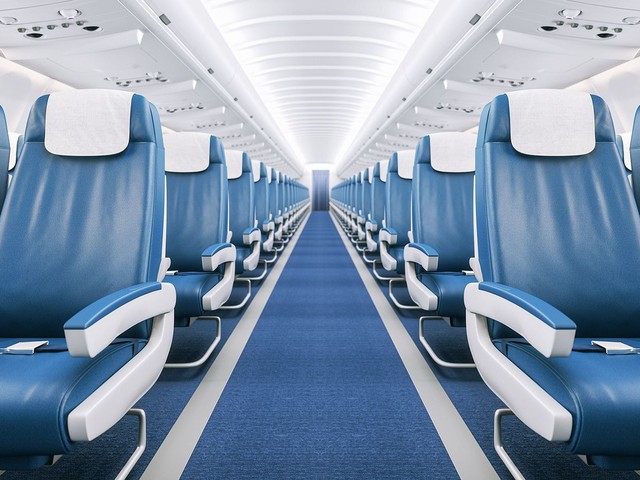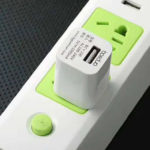According to Section 121 of the US Federal Regulations, “no aircraft may take off or land unless the backrests of all passenger seats are upright.”
The reason for this is actually quite simple: it’s a matter of safety. Former pilot Hans Mast explains that “in the upright position, the seats are locked and most secure against impact forces.” When the seats are reclined, they’re not locked in place, and sudden stops can cause them to lurch forward, potentially injuring the passenger. On the other hand, acceleration can cause the seats to slide backward.
Dan Bubb, a former pilot and professor at the University of Nevada, Las Vegas, adds that the aircraft’s inertia can change the angle of the backrest, potentially crushing the knees of the passenger sitting behind.
Mast further states that “keeping the backrests upright also ensures that the aisles remain unobstructed, facilitating more efficient evacuation in case of an emergency.” That’s why the seats around emergency exits are usually non-reclinable.

Flight attendant Steve Daniel, based in Montreal, adds, “If a seat is reclined, it can slow down the movement of the passenger behind in an emergency, and every second counts.”
Additionally, having the seats upright during take-off and landing reduces the risk of passengers banging their heads on the seat in front. If the seats are reclined, there’s a chance of head injuries.
If the crew anticipates a collision, they will instruct passengers to brace for an emergency landing, usually in a forward-leaning position. A representative from the UK Civil Aviation Authority once told the Telegraph, “Passengers can only change their position easily when sitting upright. When you realize you’re in danger on a plane, you don’t want to waste time moving your seat before you can brace.”
Aviation experts agree that take-off and landing are the most dangerous phases of a flight. According to an Airbus study, about 75% of accidents worldwide involving Airbus aircraft, both fatal and non-fatal, in the past 20 years occurred during take-off, landing, or touchdown.
“Landing and touchdown are very complex phases of flight, placing considerable demands on the crew in terms of navigation, aircraft configuration, communication with air traffic control, congested airspace, and deteriorating weather,” Airbus wrote in the study.
Boeing also recognizes take-off, landing, and touchdown as the most dangerous phases of flight. Their study from 2011 to 2022 showed that 67% of fatal accidents worldwide involving Boeing aircraft occurred during these phases.
Therefore, adhering to safety protocols during take-off and landing is crucial. In addition to keeping the backrests upright, flight attendants will also ask you to close and lock the tray tables and ensure that all bags are stowed underneath the seat in front of you or in the overhead compartments. It’s all about ensuring the safety of everyone on board.
Why Must Plane Window Shades Be Up During Takeoff and Landing?
Aviation safety experts reveal that takeoff and landing are the most critical phases of a flight, and most accidents occur during these processes. Window shades must be open so that, in an emergency, the crew can immediately determine the safest side of the plane to use for evacuation.
Additionally, keeping the window shades open during takeoff and landing offers the following benefits:
– Passengers often enjoy looking out the window, so they may quickly notice any abnormalities outside, such as wing damage, engine issues, or foreign objects, and alert the crew.
– During daytime flights, open shades help passengers’ eyes adjust to the light. In an emergency, the sudden change in light intensity won’t impair their vision.
– For night flights, if there’s an incident, ground rescue crews can more easily see what’s happening inside the plane through the windows.
According to Nguoiduatin
Explore 12 Amazing Destinations for Biking Trips
Unlock Vietnam in a brand new way with an exciting biking tour! Discover the stunning beauty of the country with Dien May XANH’s top 12 must-see destinations. From sweeping plains to clear blue beaches and mountainous vistas – experience all the sights with your own personal cycling tour. Find your ideal route and set out for an adventure today!






































